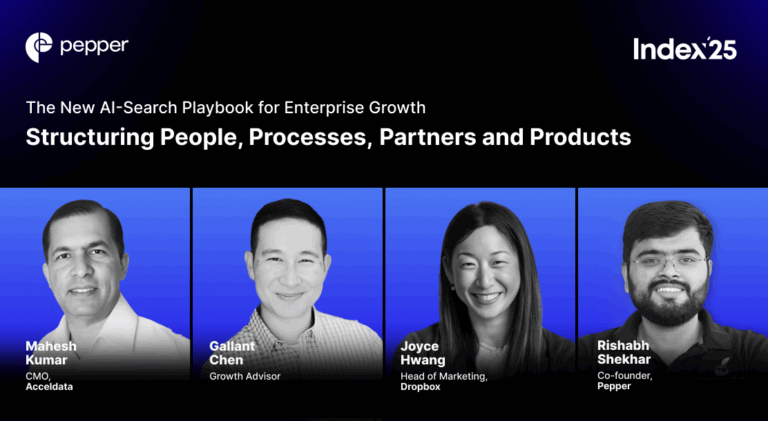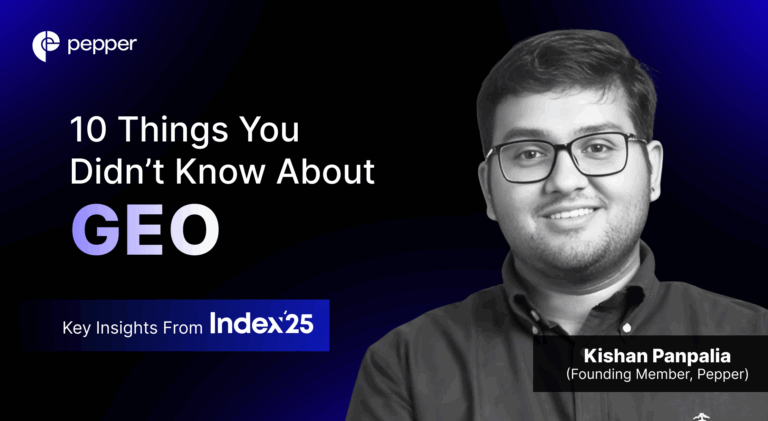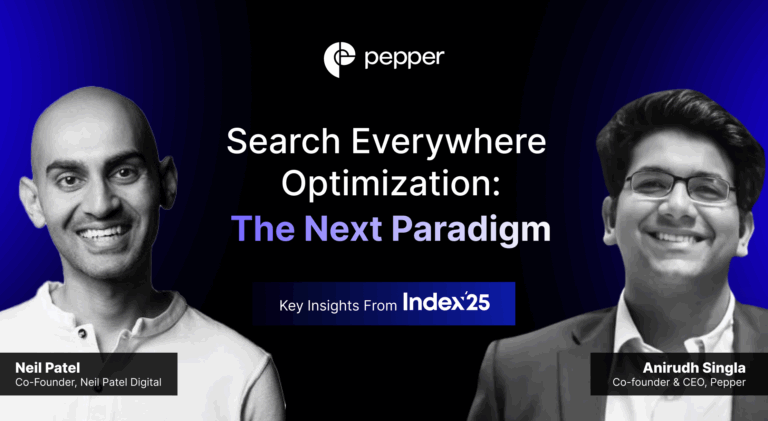Truth, Not Traffic: Winning in AI Search – Insights from Index’25 by Pepper

In a world rapidly shifting towards AI-driven search, simply being visible is no longer enough. At Index’25, hosted by Pepper, Steve Toth, CEO of Notebook, delivered a compelling session on how brands can turn AI search from an uncertain black box into a powerful sales engine.
Overview
Index’25 is a future-facing event by Pepper, focusing on innovation in marketing technology and AI. The featured session, “Truth, Not Traffic: How to Win in AI Search,” was led by Steve Toth. Steve is recognized for creating AI Notebook and SEO Notebook strategy
newsletters and for his expertise driving millions of clicks and revenue through SEO and AI optimization. He also founded Canada’s largest SEO conference, SEOIRL, held annually in Toronto.
The talk emphasized that winning in AI search isn’t just about ranking, but about serving as the trusted answer when large l anguage models (LLMs) surface content for buyers. Brands
must understand how LLMs filter, surface, and recommend content and ensure their answers are not only present but recommended.
Key tactics include:
- Optimize for user refinements, as AI search is conversational and follows up on initial queries for specific user needs.
- Use deep research agents, like ChatGPT’s, to analyze how LLMs shape buyer journeys and the kinds of content that rank.
- Aggregate themes from user queries: comparison, ICP fit, reviews, pricing, and integrations, to guide your content development.
The Mechanics of AI Search Optimization
Steve detailed his “deep research refinement synthesizer,” a tool for consolidating themes and questions AI models use to refine search results. By prioritizing content topics through the lens of these refinements, brands better position themselves to be recommended in the final stages of an AI-powered buyer journey.
Optimizing for Deal Breakers
A crucial insight is optimizing for “deal breaker” questions: features or integrations buyers explicitly require (e.g., Slack, QuickBooks). Steve’s “Deal Breaker Detector” bot helps brands identify and answer these high-stakes queries, preemptively addressing objections within site content and marketing copy.
Comparison Pages and Personalization
Comparison pages,your brand versus competitors, tailored for different ICPs (Ideal Customer Profiles) are now essential. Steve recommends creating highly specific pages (e.g., “Asana vs. ClickUp for SEO Agencies”) to leverage AI’s personalization bias. Tools shared in the talk help generate pages for hundreds of feature/competitor/ICP combinations, ensuring relevant answers are structured for both LLM and human consumption.
The Truth Alignment Framework
AI systems can misrepresent brands due to out-of-date or incomplete public data. The Truth Alignment Framework introduced by Steve aims to correct misinformation by maintaining a constantly updated “truth notebook”, a central, client-validated record of product facts, features, and value points. Brands are encouraged to create and evolve these resources so AI models, when interrogated, provide accurate and complete answers to buyer questions.
Final Takeaways
- Shape not just traffic, but truthful, recommendation-ready answers for AI search.
- Continuously interrogate LLMs to uncover gaps and update your content accordingly.
- Focus on deal breakers and create comparison resources for highly personalized buyer journeys.
- Monitor your brand’s “truth score” to ensure AI sales representation aligns with product realities.
To learn more or to explore Pepper’s tools for AI search visibility and strategy: book a demo here or reach out on business@peppercontent.in
Latest Blogs
Get your hands on the latest news!
Similar Posts

Artificial Intelligence
3 mins read
Index’25 Decodes: The New AI-Search Playbook for Enterprise Growth – Structuring People, Processes,Partners, and Products

Artificial Intelligence
3 mins read
10 Things You Didn’t Know About GEO: Key Insights From Index’25 by Pepper

Artificial Intelligence
2 mins read